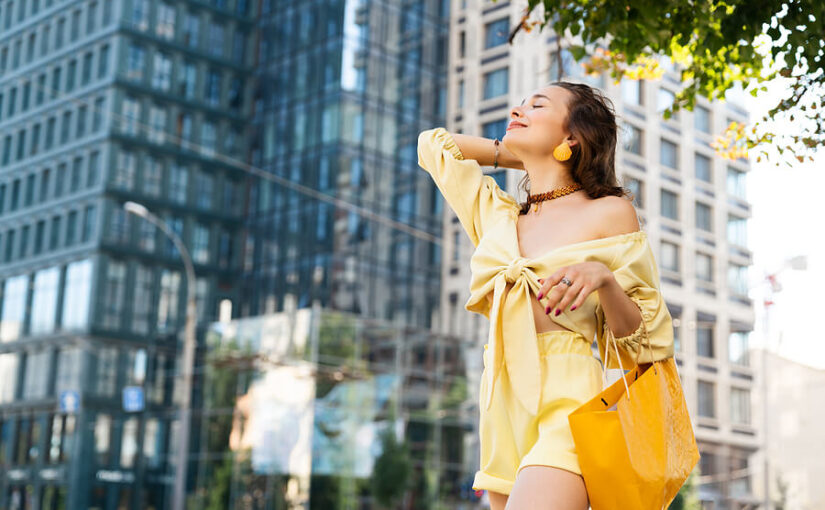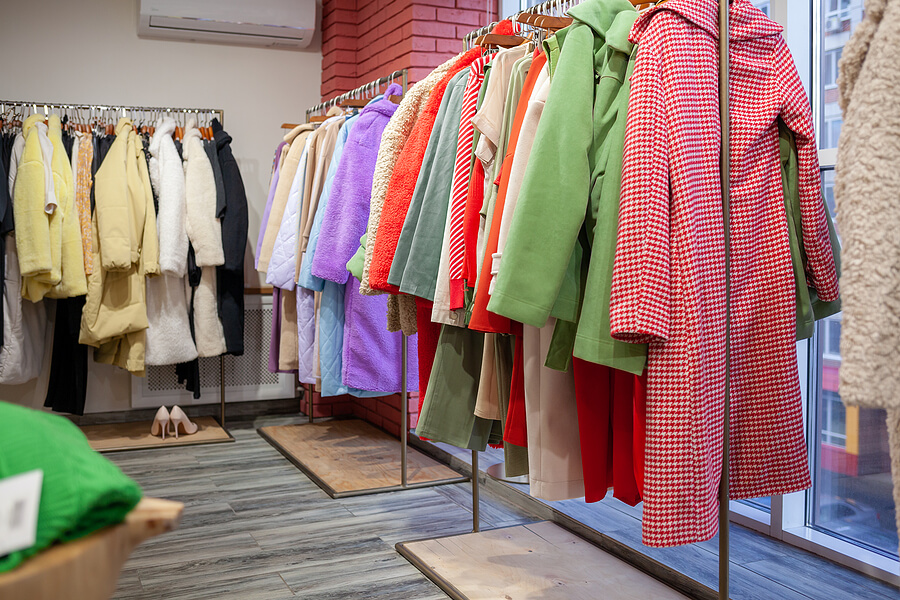As consumers shift to more sustainable buying habits, the clothing industry has come under tremendous pressure to offer eco-friendly alternatives to fast fashion.
Enter the rise of rental fashion sites, where people can temporarily borrow their clothes and wear brand-new outfits without the environmental cost.
Find out more about rental fashion and how borrowing items is helping the planet.
What is rental fashion?
Rental fashion allows a person to borrow clothes for a fixed amount of time, returning the items to the company once they’ve finished wearing them.
Historically, people used early fashion rental companies to rent high-end garments for special occasions, such as bridal dress hire or luxury designer clothes. Rather than being marketed as a sustainable fashion approach, rental fashion initially allowed consumers to wear items they would otherwise not be able to afford to own.
Nowadays, people can rent a variety of clothing items online that complement their everyday wardrobe, rather than reserving rental fashion for specific events. Entire wardrobe rental is also gaining popularity, where customers choose multiple pieces of clothing and shoes to mix and match throughout the week.
Rental fashion appeals to younger generations in particular, as millennials and Gen-Z are more likely to consider their purchases’ ethical and environmental impact. Thanks to a thriving online retail industry and higher fashion consciousness, the value of the global online clothing rental market is estimated to reach US$ 2.08 billion by 2025.
Is rental fashion eco-friendly?
Rental fashion is far more eco-friendly than fast fashion, as the rental fashion industry reuse garments. This model means several people receive the benefits of the items, preventing new clothing from being made.
Studies have shown that renting clothes has a smaller environmental footprint than buying new items, considering the amount of water, energy, and CO2 emissions saved. Since 2010, rental fashion has prevented the production of over 1.3 billion garments, saving 67 million gallons of water, 98.6 million kWh of energy, and 44.2 million pounds of CO2 emissions.
Borrowing and renting clothes tackles consumer culture that has damaged our planet and promoted a throwaway society. Rental fashion sites help extend the lifecycle of clothing with a positive narrative that borrowing clothes are cool and a guilt-free way to shop.
Recent years have seen fashion rental companies switch to greener delivery methods to lower their carbon emissions, investing in zero- or low-emission vehicles. Other changes include using pre-owned clothing, minimising plastic packaging, and using recyclable and renewable production sources.
However, there are still opportunities to make the industry more climate-friendly.
Some have raised concerns over subscription models, where customers receive rental clothes weekly or monthly. With the packaging, transport, and energy required to deliver and clean items, the eco-footprint.
Although rental fashion is a good step towards a more sustainable clothing industry, further analysis, innovation, and climate-neutral pledges are needed from rental companies to have a significant impact could be the same or higher than buying new items less frequently.
How to rent clothes online
Renting clothes online is straightforward and differs little from purchasing a new item.
The exact steps will vary depending on your chosen company and subscription model. However, it usually involves:
- Deciding on a fashion rental website
- Picking your garments to rent
- Choosing your delivery and return dates, i.e., how long you want the clothing for
- Paying for your rental items
- Returning the clothing — a prepaid shipping label is usually included
Many websites now offer a clothing rental subscription, which typically allows members to choose a specific number of rental garments each week or month, swapping the items with new shipments. The perks of this model are more extended rental periods, the chance to purchase items, regular clothing updates, and more cost-efficient rentals.
The best fashion rental sites
Whether you’re looking to rent designer clothes for a special occasion or refresh your wardrobe for the new season, there are many fashion rental sites to choose from.
HURR
The UK’s answer to Rent the Runway, HURR raised $5.4 million in funding before launching in 2019 as a peer-to-peer fashion rental marketplace.
HURR places sustainability front and centre of its business model. Customers can calculate the environmental savings of wardrobe rental beforehand and benefit from reusable packaging and green dry cleaning. HURR offsets some of its carbon emissions and encourages customers to do the same. The ‘pre-loved’ section of the site also offers customers the chance to purchase their favourite second-hand items for a discounted price.
Selfridge’s Rental
Selfridge’s, one of the UK’s most-loved luxury department stores, offers a substantial rental clothing catalogue, where customers can borrow women’s, men’s, and children’s clothing for up to 20 days.
The store also includes details of its eco-friendly cleaning methods, which involve laundering the clothes using wet and dry-cleaning techniques that are better for the environment.
All rental clothes are curated by Selfridge’s buyers, featuring some of the store’s most popular luxury labels.
Garmentry
The men’s clothing rental market is significantly smaller, with more limited options. However, Garmentry is on a mission to change this.
Like HURR, the company manages a peer-to-peer rental marketplace, with lenders listing their available clothes and managing all the posting, returns, and dry-cleaning themselves.
While the catalogue is relatively small and not as high-end as their female-focused counterparts, the selection of tops, trousers, coats, shoes, and accessories is only growing by the day, and the focus on sustainability is clear.

